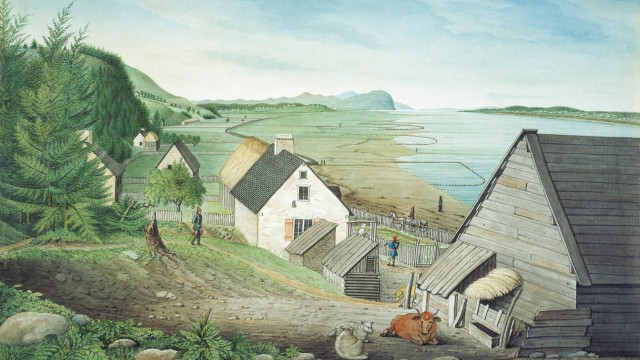Previous exhibition
November 4th, 2008 — April 19th, 2009
Costa Rica, Land of Wonders
Pointe-à-Callière will be presenting Costa Rica, Land of Wonders from November 4, 2008 to April 19, 2009. The exhibition, produced by Pointe-à-Callière in partnership with the Museo Nacional de Costa Rica, in San José, brings to Canada for the first time some 230 precious gold, jade, ceramic and sculpted stone artifacts, all of them of a rare and splendid beauty. This is the largest exhibition on this subject ever produced outside of Costa Rica.
Welcome to the "rich coast"
Costa Rica, Land of Wonders looks at the history of this country over a period of approximately 2,000 years, from 500 BC to Columbus' arrival in 1502. Visitors will learn about the diversity of its main regions, as they admire artifacts from each one: superbly executed human- and animal-effigy vessels, finely carved jade pendants, splendid gold finery and stone items symbolizing the traditions of the country's peoples. The discoveries to be made are stunning in every respect. This land that was long considered a mere offshoot of the brilliant Olmec, Maya, Inca and other civilizations to the north and south actually developed its own remarkable esthetic signature. The voyage back in time will also look at the appearance and evolution of increasingly powerful chiefdoms in Costa Rican agricultural societies.
An exotic encounter
Visitors are bound to be fascinated by the beauty of this country and its wildlife, depicted in many of the pieces in the exhibition. As they explore a space evoking the tropical forest and the mysteries of a little-known civilization, they will come to realize that the archaeology of Pre-Columbian Costa Rica (i.e., before Columbus' arrival in the Americas) has truly earned it its designation as the "rich coast."
Archaeological treasures come to Canada for the first time ever
Most of the artifacts from the Museo Nacional de Costa Rica have never been shown outside of Costa Rica before. Their tremendous esthetic appeal and technical mastery make them true masterpieces.
Some of the items in the exhibition are unique to Costa Rican culture, and have no equivalents in other Pre-Columbian American societies: for instance, finely sculpted stone grinding tables - metates - and mysterious stone spheres, many of them impressively large.
Costa Rican archaeology
Economic development in Costa Rica in the late 19th century led to the discovery of a large number of graves. Unfortunately, many archaeological artifacts left the country and made their way into private collections. Other factors also erased traces of the past, including the acidic soil, torrential rainfall and land development. So although Costa Rican archaeologists have unearthed enough artifacts to make it possible to establish a context for items used by the elite, there is still much work to be done to gain a greater understanding of the day-to-day life of these early populations.
Today the Costa Rican government is intent on protecting the country's archaeological heritage. All objects found must be turned over to the collection of the Museo Nacional de Costa Rica, salvage digs are required before any construction and archaeological sites are protected by law - a job made easier now that Costa Ricans themselves are more aware of their importance.

